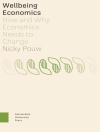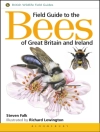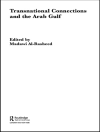An accessible introduction to statistics written specifically for Education students in the changing educational landscape
Government scrutiny and intensified oversight have dramatically changed the landscape of education in recent years. Observers want to know how schools compare, which district is best, which states are spending the most per student on education, whether reforms are making a difference, and why so many students are failing. Some of these questions require technical answers that educators historically redirected to outside experts, but the questions leveled at all educators have become so acute and persistent that they can no longer be outsourced. This text helps educators develop the tools and the conceptual understanding needed to provide definitive answers to difficult statistical questions facing education today.
İçerik tablosu
Part A: Developing a Context for Statistical Analysis
Chapter 1: A Context for Solving Quantitative Problems
Chapter 2: Describing Data
Part B: Presenting Data
Chapter 3: Data Distributions: Picturing Data
Chapter 4: Working with the Normal Curve: z Scores
Part C. Examining Differences
Chapter 5: Probability and the Normal Distribution
Chapter 6: t for One, or Two
Chapter 7: Analysis of Variance
Chapter 8: ANOVA with more than One Independent Variable: Factorial ANOVA
Chapter 9: Dependent Groups Tests for Interval Data
Part D. Association and Prediction
Chapter 10: Correlation
Chapter 11: Regression with One Predictor
Chapter 12: Regression with More than One Predictor
Part E. Tests for Nominal and Ordinal Data
Chapter 13: Some of the Chi-square Tests
Chapter 14: Working with Ordinal, More, or Less-than Data
Part F. Tests, Measurement Issues and Selected Advanced Topics
Chapter 15: Testing Issues
Chapter 16: A Brief Introduction to Selected Advanced Topics
Glossary
Appendices: Tables of Critical Values
Appendices: A Primer in SPSS®
Appendices: Solutions to Selected Problems
Yazar hakkında
David Tanner is a Professor in the Department of Educational Research and Administration at California State University, Fresno, where he was the Department Chair from 1990-1995. He received his Ph.D. in Curriculum and Instruction/Measurement from Texas A&M University, and his areas of interest include educational psychology; statistics and measurement; educational research; quantitative and qualitative evaluation; assessing student achievement; evaluating classroom assessment instruments; and evaluating the performance of teachers and teacher candidates. He has authored several journal articles and the textbook Assessing Academic Achievement (©2001).












